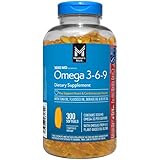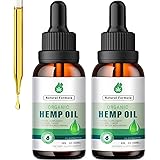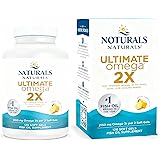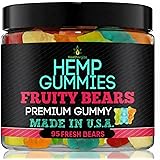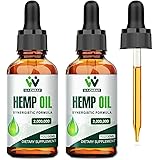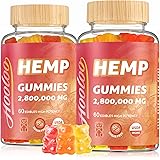Navigating the expansive world of CBD oil can often feel like traversing an intricate maze. With countless products vying for attention, discerning the ideal starting point or the most efficacious formulation can be a challenge. The video above offers a valuable foundational discussion on CBD oils, highlighting their popularity and key considerations for new users.
Indeed, CBD oils are reported to constitute over 75% of all CBD products sold, positioning them as the most accessible entry point for many. Their versatility and relatively high bioavailability are often cited as primary factors contributing to their widespread acceptance. However, beneath the surface of this popularity lies a complex landscape of concentrations, formulations, and administration nuances that warrant a deeper examination.
Understanding CBD Oil Strengths and Dosing Protocols
When embarking upon one’s CBD journey, the strength of the CBD oil selected is a paramount consideration. Products are typically labeled with their total CBD content in milligrams per bottle, such as the 1000 mg example discussed in the video. However, the more crucial metric for the consumer is the CBD content per dose, which is often facilitated by a graduated pipette.
Generally, a conservative approach is recommended when initiating CBD supplementation; individuals are advised to “start low and build up gradually.” This method, known as titration, allows the user to gauge their personal response to cannabinoids and find the minimal effective dose. While some individuals may experience desired effects at lower doses, others might require higher concentrations. It has been suggested by regulatory bodies, such as the UK’s Food Standards Agency (FSA), that the average healthy adult should not exceed 70 milligrams of CBD per day. This guideline is intended to promote safe consumption, although individual tolerance levels can vary considerably.
For instance, a 1000 mg CBD oil bottle, if designed for precise dosing, might deliver 25 mg per quarter pipette or 50 mg per half pipette, as demonstrated. Understanding these specific measurements is critical for adherence to daily limits and for preventing unintentional overconsumption. Conversely, with lower strength CBD oils, multiple doses throughout the day might be required to achieve similar CBD intake, which can impact convenience and cost-effectiveness for some users.
Administering CBD Oil for Optimal Bioavailability
The method of administration significantly influences how effectively CBD is absorbed into the bloodstream. Sublingual administration, involving placing the CBD oil under the tongue, is the preferred method for ingestible products like those discussed. This technique leverages the dense network of capillaries and blood vessels located in the oral mucosa. When the oil is held sublingually for a period—ideally two minutes or more, depending on patience—the CBD is absorbed directly into the bloodstream.
This direct absorption mechanism bypasses the digestive system and the first-pass metabolism in the liver, where a significant portion of orally ingested CBD would otherwise be broken down. Consequently, sublingual delivery leads to a higher bioavailability compared to traditional ingestion (e.g., swallowing capsules), meaning a greater percentage of the CBD dose reaches systemic circulation. This efficiency contributes to a faster onset of effects and maximizes the utility of each dose.
Full-Spectrum vs. Isolate: Unpacking the “Phytochemical Factory”
The discussion in the video highlights a crucial distinction in CBD oil formulation: whether it is derived from a “100% cannabis formula” or uses isolated CBD in a generic carrier oil. A 100% cannabis formula, also known as a full-spectrum CBD oil, means that every drop of the product is derived from the *Cannabis Sativa L* plant, including its natural carrier oils (e.g., hemp seed oil).
This approach retains the rich array of phytochemicals naturally present in the hemp plant. Beyond cannabinoids like CBD, these include terpenes, flavonoids, and other beneficial plant compounds. Terpenes, for instance, are aromatic compounds that give plants their distinct smells and tastes (e.g., the peppery or vegetal taste noted in the video) but are also thought to possess their own therapeutic properties. Common terpenes found in hemp include myrcene (earthy, musky), limonene (citrusy), and beta-caryophyllene (spicy, peppery).
The collective action of these compounds is often referred to as the “entourage effect.” The hypothesis suggests that these various plant components work synergistically, amplifying each other’s therapeutic potential, making the whole greater than the sum of its parts. For example, specific terpenes might modulate how CBD interacts with cannabinoid receptors, potentially enhancing efficacy or broadening the spectrum of effects. This comprehensive profile is what makes premium CBD oil often synonymous with a full-spectrum formulation.
Conversely, CBD isolates are products containing only pure CBD, with all other plant compounds removed during the extraction and purification process. These are typically mixed with generic carrier oils such as MCT coconut oil or olive oil. While isolates offer a flavor-neutral option and are suitable for individuals who wish to avoid even trace amounts of THC, they lack the full “phytochemical factory” benefits associated with full-spectrum products. The absence of other cannabinoids and terpenes means that the potential for the entourage effect is largely diminished or absent.
Raw vs. Refined CBD Oil: A Spectrum of Extraction
Beyond the full-spectrum vs. isolate distinction, CBD oils also come in “raw” and “refined” forms. These terms refer to the degree of processing undergone after initial extraction from the hemp plant. Raw CBD oil is typically characterized by its dark, thick consistency and a robust, earthy, or intensely vegetal taste, largely due to the presence of chlorophyll, plant waxes, and other fibrous materials. It represents the purest, least altered form of the extract.
In contrast, refined CBD oil undergoes additional filtration and purification steps, resulting in a lighter, golden hue and a smoother, less pungent taste—often compared to olive oil in appearance. During this refinement process, components like chlorophyll, lipids, and some heavier plant materials are removed. While both raw and refined oils contain comparable amounts of CBD, the raw oil retains a higher concentration of the plant’s natural phytochemicals, including various cannabinoids in their acidic forms (e.g., CBDA). These acidic forms are thought to have distinct therapeutic properties that may be lost or altered during the refinement process, which often includes decarboxylation.
The choice between raw and refined CBD oil often boils down to personal preference and desired benefits. A refined CBD oil provides a more palatable experience for those sensitive to strong botanical tastes, while still offering the benefits of full-spectrum cannabinoids and terpenes. However, for consumers seeking the maximum possible array of natural plant nutrients and the potentially amplified effects of a comprehensive phytochemical profile, a raw CBD oil may be considered superior, even if it requires an acquired taste. It is essentially an amplified version, packed with dense cannabis nutrients and compounds that contribute to the robust entourage effect.
Beyond Premium: Budgetary and Convenient CBD Oil Options
While 100% cannabis formulas administered via a pipette dropper are often considered the premium choice for CBD oil, the market also caters to consumers with different preferences and budgetary considerations. For those for whom affordability is a key factor, CBD oils are available that may not be exclusively 100% cannabis formula but offer other benefits.
These alternatives might incorporate CBD isolate or broad-spectrum CBD (which contains most cannabinoids and terpenes but 0% THC) combined with less expensive carrier oils like MCT oil or hemp seed oil that are not necessarily extracted from the same plant source as the CBD itself. While potentially lacking the full entourage effect of a full-spectrum 100% cannabis oil, these products still deliver CBD effectively. Their appeal often lies in added features such as natural flavorings, which can make the product more palatable for individuals who find the natural taste of hemp disagreeable.
Moreover, innovations in packaging and administration, such as the inclusion of a spray cap instead of a pipette dropper, introduce an element of convenience and precise dosing. A spray cap can provide a consistent and measured dose with each actuation, simplifying the user experience, particularly for those who find pipettes cumbersome. Ultimately, the market for CBD oil is diverse, offering high-strength formulations and varied delivery methods across a spectrum of price points, allowing consumers to align their choice with their personal needs, budget, and desired experience.


